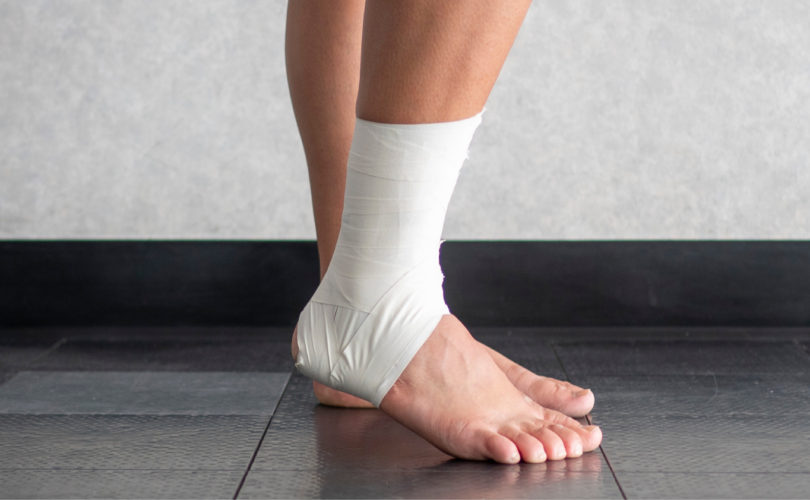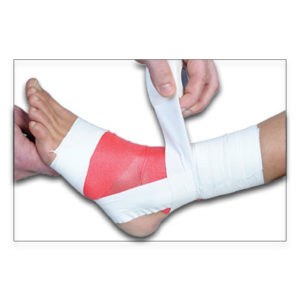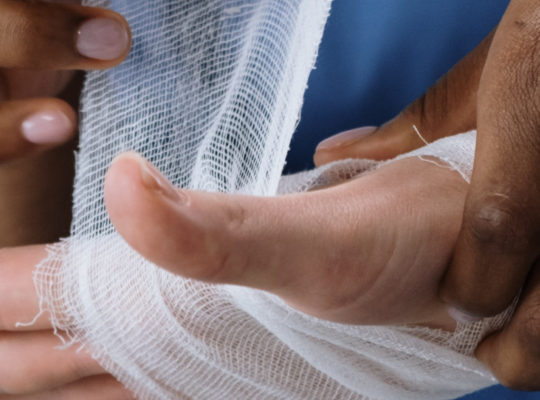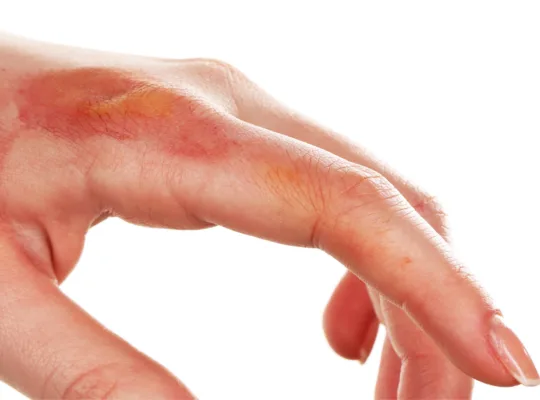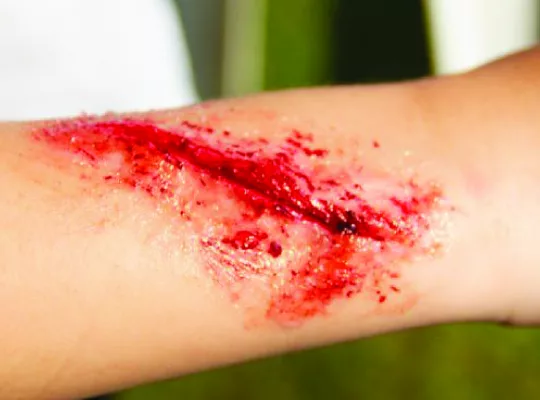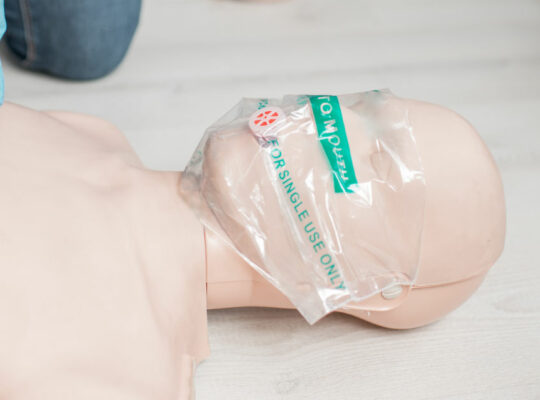Pre-wrap is a lightweight, foam-based item commonly used in sports emergency accessories and medical settings. This product can be purchased in various colors and sizes for different needs. Its primary function is to protect the skin by creating a barrier between adhesive tape and the body. This helps avoid irritation or discomfort, especially for athletes who need to tape joints or muscles regularly.
Explore different pre-wrap options to find the most suitable one for your activities.
One common frustration is dealing with the sticky residue left by medical or athletic tape. Pre-wrap eliminates that problem, ensuring easy removal without damaging the skin. Another issue many face is finding a comfortable way to hold hair in place during games or workouts—pre-wrap can also be used as a quick hairband.
Some medical supplies serve multiple purposes. Pre-wrap, for one, has medical and non-medical uses. Athletes and non-athletes can find purposes for this soft, thin foam substance.
In this article, we’ll break down how pre-wrap works, where it’s most useful, and why it’s a must-have for anyone active. You’ll leave with a clear understanding of its purpose and practical tips for everyday use.
What is Pre-wrap?
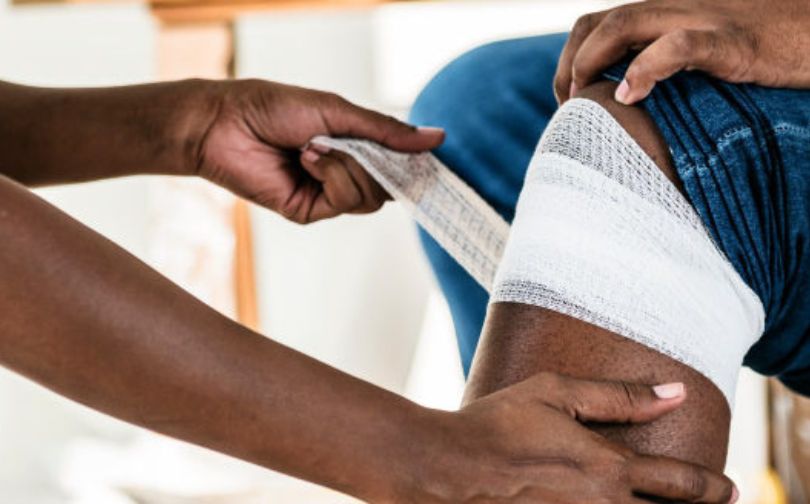
Pre wrap is a thin, translucent foam substrate that is highly porous, unlike the other non-porous tapes. It comes in many colors, making it versatile for different uses. The foam is self-adherent, so it only sticks to itself. It is soft while being highly effective for many athletes’ needs.
Pre wrap is designed to help protect skin from skin irritation caused by tape and bandages, that may cause chafing or inflammation. It goes on before athletic tape to protect the area being bandaged. Pre-wrap can also be used to hold equipment or clothing in place. It can be used to hold socks or pads in place while competing. It can also act as a foot care protective measure inside athletic footwear to prevent blistering.
Pre wrap is very useful for athletes but carrying it with hygiene can be a frustrating task. That is why you should use a pre-wrap case to carry it anywhere.
12 Common Uses for Pre-wrap
People can get really creative with pre-wrap. We’ve found a lot of uses for pre wrap ourselves and have compiled a list of some useful and some entertaining manners to use pre-wrap.
- Apply before Medical Taping: This is the most common use for pre-wrap. Protect your skin from irritation and chafing. Use a tape cutter to cut the tape and wrap your ankle, knee, or another joint to protect your skin, then apply medical tape to stabilize an injury.
- Make a Headband: Some sports forbid headbands, so use pre-wrap as a makeshift headband.
- Hold up Athletic Socks/Clothing in Place: Prevent skin irritation and slippage by placing the foam wrapping under socks, shin guards, gloves or pads without sticky residue.
- Colorful Team Wear: Coordinate with your teammates with matching headbands or armbands. Or promote a cause like Breast Cancer Awareness with a pink accessory.
- Secure an Ice Pack: Ice a swollen area and prevent skin irritation. Place a layer of prewrap between the skin and the icepack, then wrap it around the affected area to keep it in place.
- Under a HelmetWear pre-wrap under your helmet to keep your gear firmly in place and enhance comfort.
- Break in New Shoes Painlessly: Rather than limp around until your take the shape of your feet. Wrap the foam around your heel or the ball of your foot to prevent blistering.
- Decorations: Use the wrap as streamers to hang from the wall or the ceiling. This is perfect for sports teams or athletic themed parties.
- Mark a Trail: Use pre wrap as a trail marker. Tie a distinctive color around trees along your hike to mark your path so you can find your way back.
- Wrap Pen or Pencil: Customize your writing utensils with a custom grip. Use multiple colors to show your support for your sports team or simply choose your favorite colors. Artists and writers alike use this method to make a writing utensil the desired thickness.
- Make an Inexpensive Crafts: An easy and affordable alternative to tulle, use pre wrap for collages, wreaths, or another craft. Easily tear it to be the exact size you’re looking for, as it is designed to be easy to tear.
- Secure Your Laces During a Game or on a Run: Wrap around the arch of your foot to secure your laces so they will stay in place for the entirety of your athletics.
Pre wrap has a surprising number of uses. Pre-wrap is very useful for athletes but carrying it with hygiene can be a frustrating task. That is why you should use a pre-wrap case to carry it anywhere.
Whether you are an athlete, a professional, or an avid crafter, you will no doubt find a use for sports wrap.
What Are the Limitations of Using Pre-wrap?
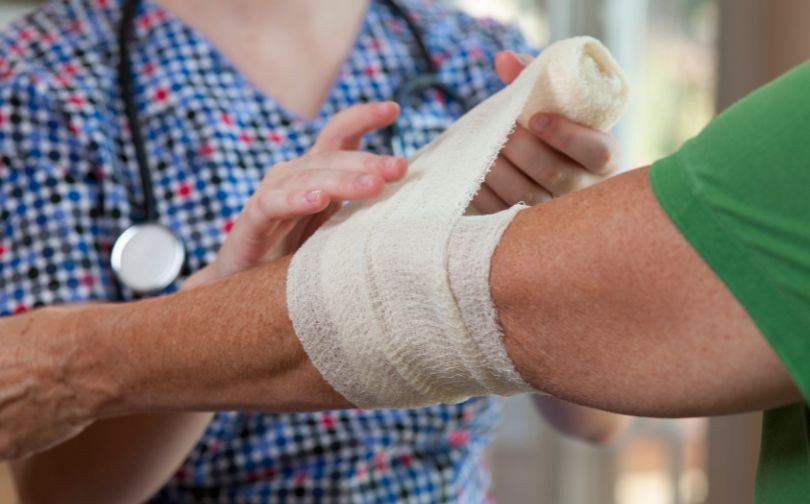
Pre-wrap, while helpful in many scenarios, has specific limitations that should be noted. It lacks adhesive properties, meaning it sticks only to itself and not to other surfaces. This limits its usefulness when structural support or stability is required, as it cannot substitute for athletic tape in keeping joints secure. It is primarily meant to act as a protective layer under tape, rather than providing support on its own.
Another drawback is its limited ability to restrict movement. Pre-wrap does not have the tensile strength needed to stabilize joints, making it unsuitable for use in situations where joint support is crucial. When extra protection or immobilization is necessary, athletic tape is often a better option.
Moreover, pre-wrap isn’t essential for everyone. Its main purpose is to protect the skin from irritation caused by the adhesive in athletic tapes. For those without sensitive skin, pre-wrap may not offer any added benefit. In such cases, using athletic tape directly on the skin is often sufficient.
Finally, pre-wrap can be prone to slipping during intense physical activity. Since it doesn’t stick to the skin, it may shift unless secured tightly with tape at both ends, which can lead to a need for frequent adjustments.
Conclusion
Pre-wrap serves a valuable role in sports and medical settings, offering protection from skin irritation when using adhesive tape. Its versatility extends beyond its original purpose, finding use in holding athletic gear, creating headbands, or even serving as makeshift decorations.
Although pre-wrap has many practical applications, it’s not a replacement for athletic tape when joint support is needed. Its lack of adhesive properties and limited ability to restrict movement highlight its primary function as a protective barrier.
Whether you’re an athlete or just looking for a simple solution to everyday needs, pre-wrap offers a wide range of uses. However, understanding its limitations ensures it’s used effectively for the right situations.
FAQs
How Does Pre-wrap Differ From Other Athletic Tapes?
Pre-wrap is a soft, non-adhesive foam underwrap that shields the skin from irritation caused by traditional athletic tapes. Unlike standard tapes, pre-wrap doesn’t stick to the skin and provides a breathable, comfortable layer that ensures long-lasting protection during physical activities without restricting movement.
Can Pre-wrap Be Used on All Body Parts?
Yes, pre-wrap is flexible and can be applied to any body part. It’s often used on joints like ankles to support it and prevent skin irritation from adhesive tapes. Additionally, it can hold pads in place or even be used inside footwear to prevent blisters.
How Can Pre-wrap Be Used as a Hair Accessory?
Pre-wrap can be easily fashioned into headbands or hair ties. Athletes often tear a strip of pre-wrap, tie it to fit their head, and use it to keep hair out of the face during activities. Its lightweight texture and range of colors make it both functional and stylish.
What Makes Pre-wrap Comfortable for Athletes?
Pre-wrap’s soft, foam-based material ensures it’s gentle on the skin while allowing full movement. It adheres only to itself, preventing chafing or discomfort from adhesive tapes. The breathable and lightweight design makes it ideal for extended use without causing irritation during sports.

